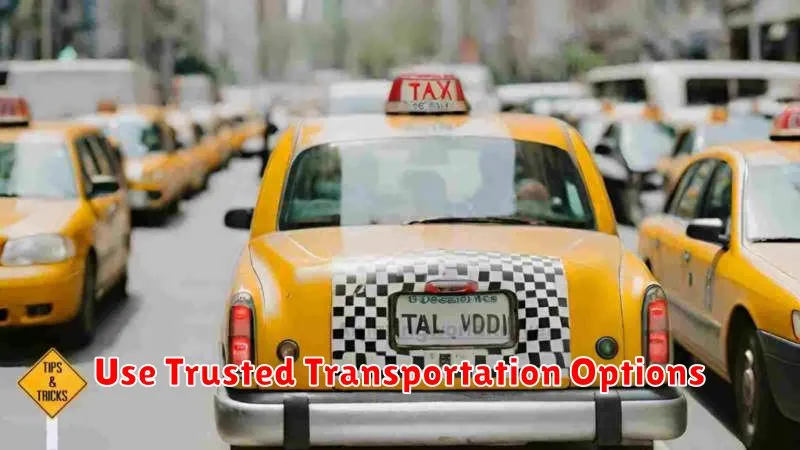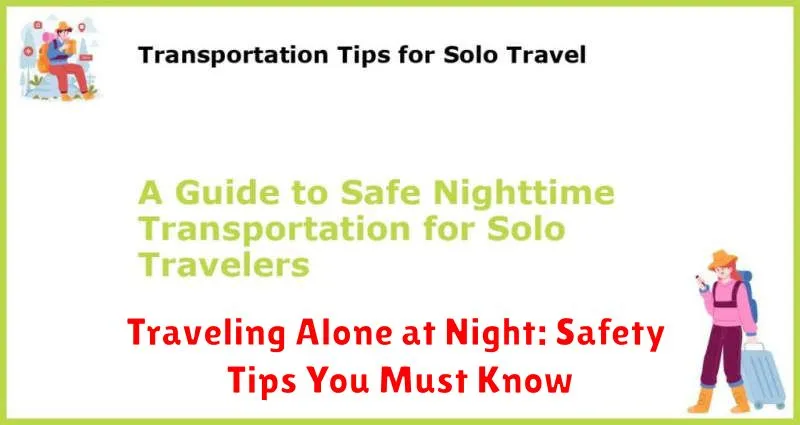Traveling alone at night can be an exciting and liberating experience, offering a unique perspective on your destination. However, it’s essential to prioritize safety. This article will provide essential safety tips for anyone considering traveling alone at night, whether you’re exploring a new city, returning home late, or simply enjoying a solitary evening stroll. From pre-trip planning to on-the-ground awareness, we’ll cover important strategies to help ensure your personal safety and peace of mind while traveling solo at night.
Personal safety is paramount when traveling alone, particularly after dark. This guide addresses key concerns such as choosing safe routes, staying aware of your surroundings, and utilizing technology and common sense to mitigate risks. Whether you’re a seasoned traveler or embarking on your first solo night trip, these safety tips are designed to empower you to make informed decisions and navigate nighttime environments with confidence. Understanding potential dangers and taking proactive steps to protect yourself will allow you to enjoy the freedom and adventure of traveling alone at night safely and responsibly.
Is It Safe to Travel Alone at Night?
Traveling alone at night presents unique safety concerns. It’s not inherently unsafe, but the risks can be higher compared to daytime travel. Factors like your destination, mode of transport, and personal awareness all play a role. Careful planning and proactive safety measures are crucial for mitigating potential risks.
In urban areas, well-lit and populated streets generally offer greater safety. However, even in familiar cities, deserted areas should be avoided after dark. Rural areas, with limited infrastructure and assistance, require extra caution. Understanding the specific safety concerns of your destination is paramount.
Your chosen mode of transport also significantly impacts safety. Driving alone provides more control, but fatigue and unfamiliar roads can be dangerous. Public transport offers safety in numbers but necessitates awareness of your surroundings. Walking alone at night, especially in isolated areas, should be minimized or avoided if possible.
Personal safety practices contribute significantly to minimizing risks. Sharing your itinerary with someone, staying aware of your surroundings, and avoiding distractions like headphones can help ensure a safe journey.
Choose Well-Lit and Populated Routes
When traveling alone at night, prioritize routes that are well-lit and populated. Avoid dark alleys, deserted streets, or poorly lit shortcuts, even if they appear to be faster. Criminals are more likely to target individuals in isolated areas. A well-lit path increases visibility and can deter potential threats.
Opt for streets with consistent pedestrian traffic. The presence of other people creates a sense of safety and can discourage unwanted attention. If you’re unsure about a particular route, consider using a ride-sharing service or public transportation, especially late at night. Safety should always be your top priority.
Avoid Shortcuts and Dark Alleys

When traveling alone at night, prioritize well-lit and populated routes, even if it means a slightly longer journey. Avoid shortcuts through dimly lit areas, parks, or alleys. These locations can be isolated and increase your vulnerability to potential threats. Criminals often target individuals in secluded areas where witnesses are less likely to be present.
Stick to main streets with active businesses and pedestrian traffic. The presence of other people can act as a deterrent to potential criminals and increase your chances of getting help if needed. If you are unsure about a particular route, consider using a ride-sharing service or taxi, especially if traveling late at night.
Trust your instincts. If a situation or a particular route feels unsafe, it is always better to err on the side of caution and find an alternative path. Your safety is paramount.
Use Trusted Transportation Options

When traveling alone at night, prioritize safe and reliable transportation. If possible, opt for pre-booked rideshares or taxis. Verify the driver’s information matches the app or dispatch details before entering the vehicle.
Public transportation can be a viable option if it’s well-lit and populated. Sit near the driver or conductor and be aware of your surroundings. If using personal vehicles, ensure it’s in good working order and park in well-lit areas.
Avoid accepting rides from strangers or using unlicensed ride-hailing services. Inform a trusted contact of your travel plans, including your chosen transportation method, estimated arrival time, and the driver’s information if applicable.
Let Someone Know Your Location
Traveling alone at night can be risky. A key safety practice is to keep someone informed about your whereabouts. Before you depart, tell a trusted friend or family member your detailed itinerary. This includes your starting point, destination, planned route, estimated arrival time, and transportation method.
Regular check-ins are crucial. Agree on a schedule to update your contact person on your progress. This could be at certain intervals, when you reach specific checkpoints, or upon arrival at your destination. Failing to check-in at the agreed-upon time should trigger a predetermined action plan by your contact person.
Utilize technology to share your real-time location. Many smartphone apps allow you to share your GPS location with selected contacts. This provides an added layer of security, enabling them to monitor your journey and ensure your safe arrival.
Carry Safety Essentials Like Whistles or Apps
When traveling alone at night, carrying certain safety essentials can significantly enhance your security. A whistle, for instance, can be used to attract attention if you find yourself in a threatening situation. Its high-pitched sound can deter potential attackers and alert others nearby.
Personal safety apps are another invaluable tool. Many apps offer features like GPS tracking, emergency alerts, and one-touch check-ins with designated contacts. These apps can provide a sense of security and a quick way to call for help if needed. Ensure your chosen app is reliable and has good reviews.
Consider a portable charger to keep your phone powered up throughout your journey, especially if you’re relying on it for navigation or communication. A dead phone can leave you vulnerable in unfamiliar surroundings at night.
While not strictly essential, a small flashlight can be helpful for navigating dimly lit areas or checking your surroundings. It can also disorient a potential attacker.
Stay Aware and Avoid Distractions
Maintaining situational awareness is paramount when traveling alone at night. Constantly scan your surroundings and be aware of the people around you. Avoid becoming engrossed in your phone or listening to music at high volumes, as this can significantly reduce your awareness of potential dangers. Distractions make you an easier target.
Limit distractions to stay alert and aware of your environment. If you need to use your phone for navigation, do so briefly and in a safe location. Avoid walking and looking at your phone simultaneously. Try to maintain eye contact with people passing by, which can deter potential threats. Projecting confidence and awareness can discourage unwanted attention.

